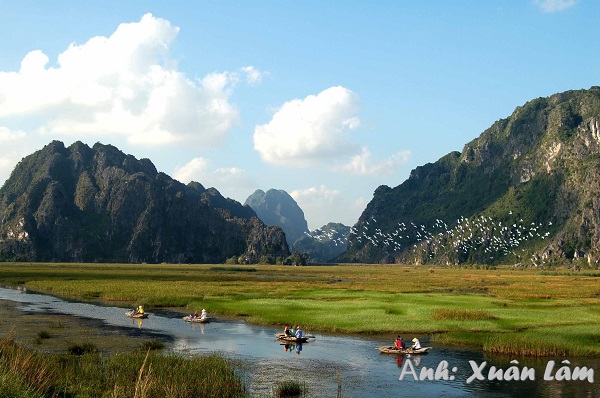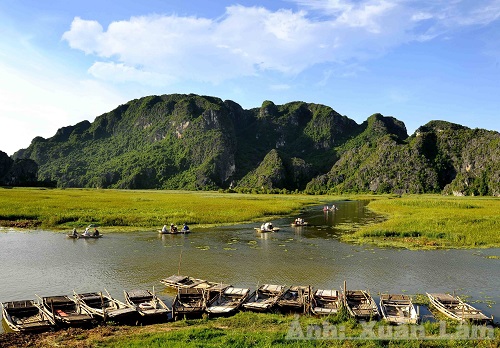Van Long lagoon eco-tourism area is located in Gia Vien district, Ninh Binh province. This is the largest wetland nature reserve in the Northern Delta. Especially in May 2019, Van Long lagoon eco-tourism area was honored to be recognized by the International Ramsar Convention as the 9th Ramsar site of Vietnam (Ramsar Site No. 2360 of the World).
Van Long lagoon eco-tourism area is an attractive destination for domestic and foreign tourists, because this place has a wild and pure beauty. With an area of about 3,000 hectares, there are 457 species of higher plants, of which 8 species are recorded in the Red Book of Vietnam: abstinence, flower slices, broadleaf Tue, Cot Toai Boi, Sang, Bach Bo, Ma Tien Hoa Tan. There are 39 species of animals, 12 species of rare animals such as: king cobra, iguana, ground python, buffalo snake, gecko....


It is the 9th Ramsar site of Vietnam. Van Long lagoon is recognized as having a unique and rich natural landscape of wetlands when possessing a diverse ecosystem that is home to many rare species of flora and fauna. Coming to Van Long, visitors can walk along the dike to see the majestic natural scenery of the mountains, more attractive to visitors to get off the boat to explore the lagoon with countless interesting things, turn each wave of reeds. To explore an extremely relaxing and peaceful space like a natural ink painting with four sides surrounded by limestone mountains with the right shape of the name such as Meo Cao mountain, Mam Xoi mountain, Hom Sach mountain, Da Ban mountain, Nghien mountain, Mo Coi mountain, Co Tien mountain, ...
Currently, this place has become a key tourist area of the country when it owns 2 records of the Vietnam Record Book Center: "The place with the highest number of white-ass langurs" and "The place with the greatest nature picture".


Van Long lagoon not only has the values of biodiversity conservation but also has a beautiful, peaceful and fresh natural landscape, is an ideal tourist destination to help people get closer to nature, build a sense of responsibility for nature protection, conservation of scenic spots recognized by international organizations.